Perfect Vanilla Butter Cake
This is the only Vanilla Butter Cake recipe you’ll ever want or need. Mixing technique can make a big difference when making cake batter. Find out the best way to get a light and tender cake.
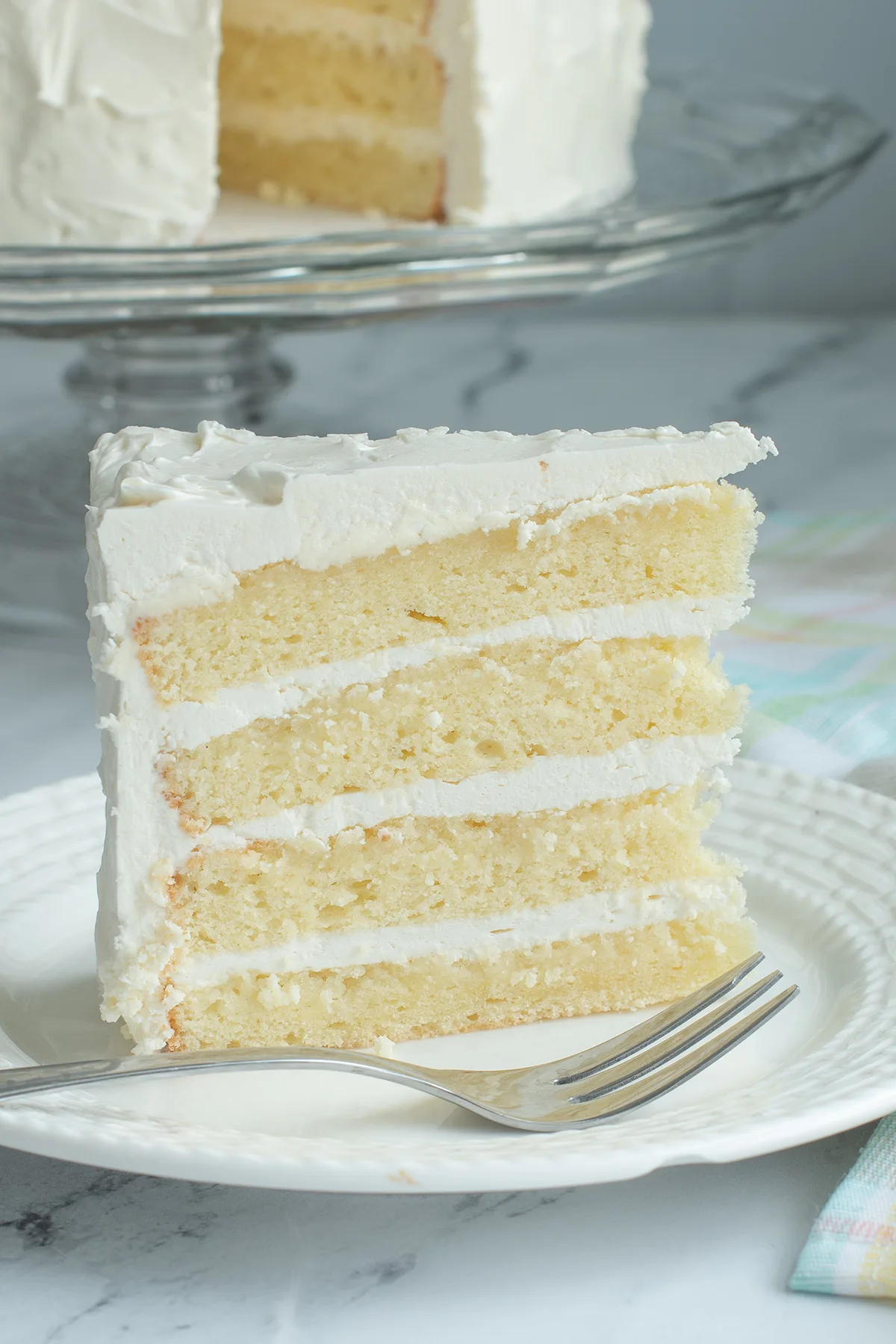
Table of contents
Why this is the best Vanilla Butter Cake Recipe
First of all this is a great recipe because it is a balanced recipe.
Professional bakers use the “Baker’s Percentage” to balance the ingredients in a recipe. With this knowledge I worked for months developing the best vanilla cake.
In fact, this exact recipe was the base for hundreds and hundreds of wedding cakes I sold when I had my wedding cake business.
You can find the percentages for this Vanilla Butter Cake recipe in this all-encompassing post describing how to create the best cake recipes.
Once you have a balanced recipe you need to think about mixing technique.
I make my butter cakes using the “reverse creaming” method of mixing. Reverse creaming makes a cake with a soft and tender crumb. You can see side by side comparisons of reverse and traditional creaming below.
Recipe Ingredients
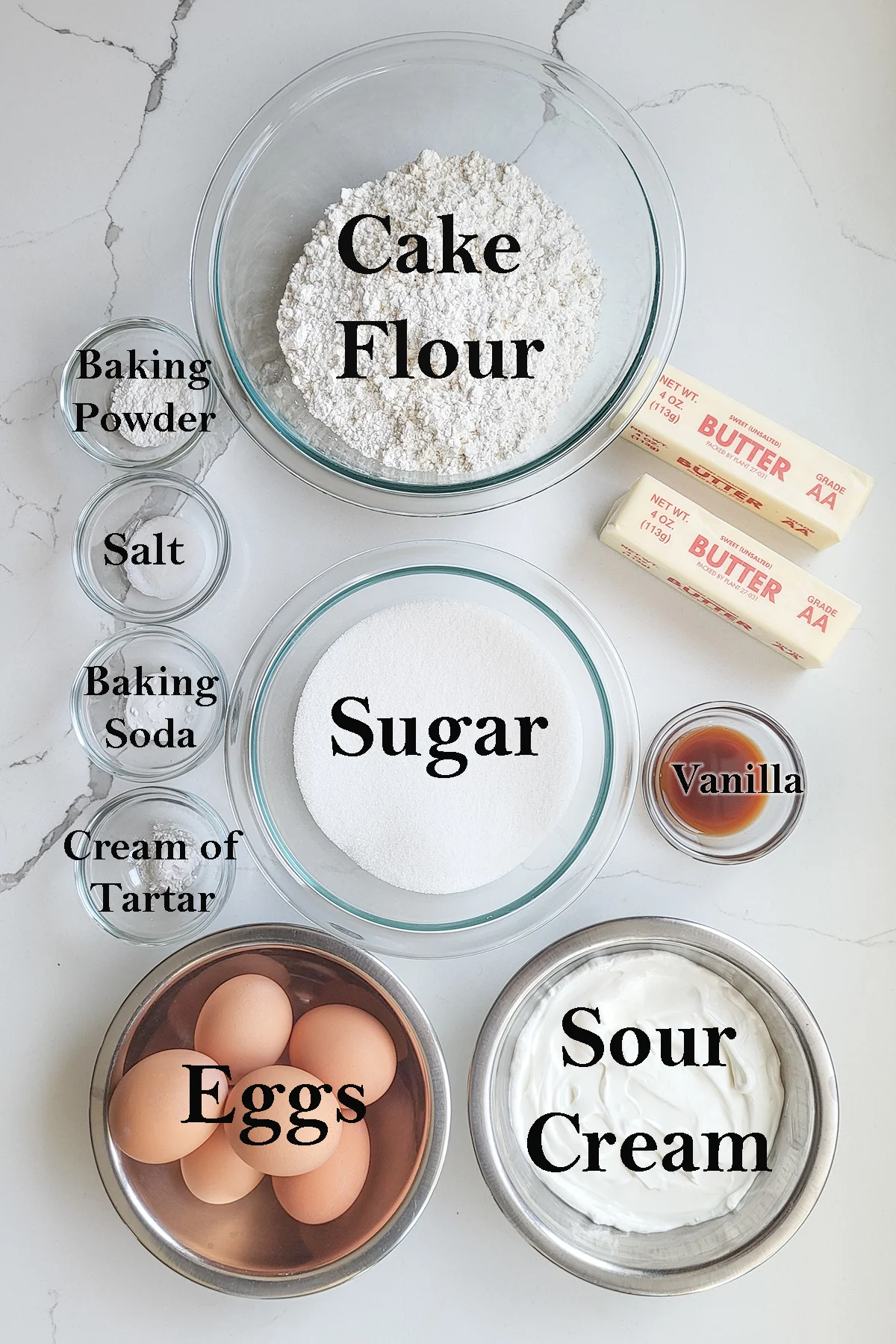
Ingredient Notes
- Cake Flour – Has a lower protein content than all purpose flour so it makes a softer cake. I prefer bleached cake flour. Bleached cake flour is acidic which tenderizes the cake and allows the batter to absorb more liquid for a moister cake.
- Sour Cream – Is used instead of milk as the “liquid” in this batter. Because sour cream is acidic it tenderizes the crumb of the cake and the added fat enriches the batter.
- Eggs – Extra egg yolks in the batter enriches the cake and emulsifies the batter for an even and soft crumb. The whites are whipped and folded into the batter for an extra light and soft cake crumb.
- Cream of Tatar – This acidic ingredient stabilizes the whipped egg whites and acidifies the batter for a softer crumb.
Process Photos
See the recipe card for detailed instructions and measurements.
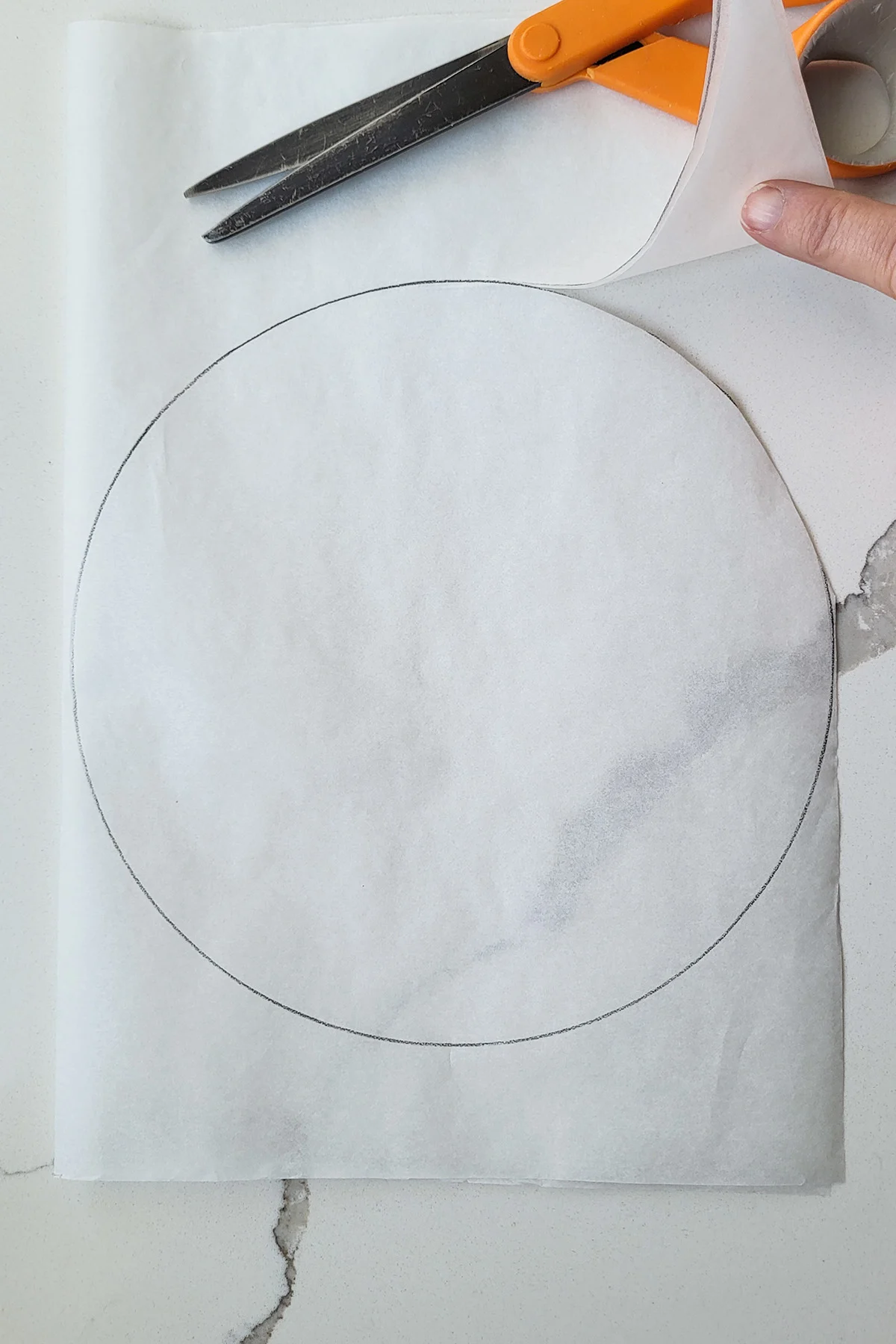
- Draw an 8″ circle on parchment paper using your cake pan as a guide. Cut out two circles and use them to line your cake pans.
- If you don’t have parchment paper butter and flour the bottom of the cake pan only, not the sides.
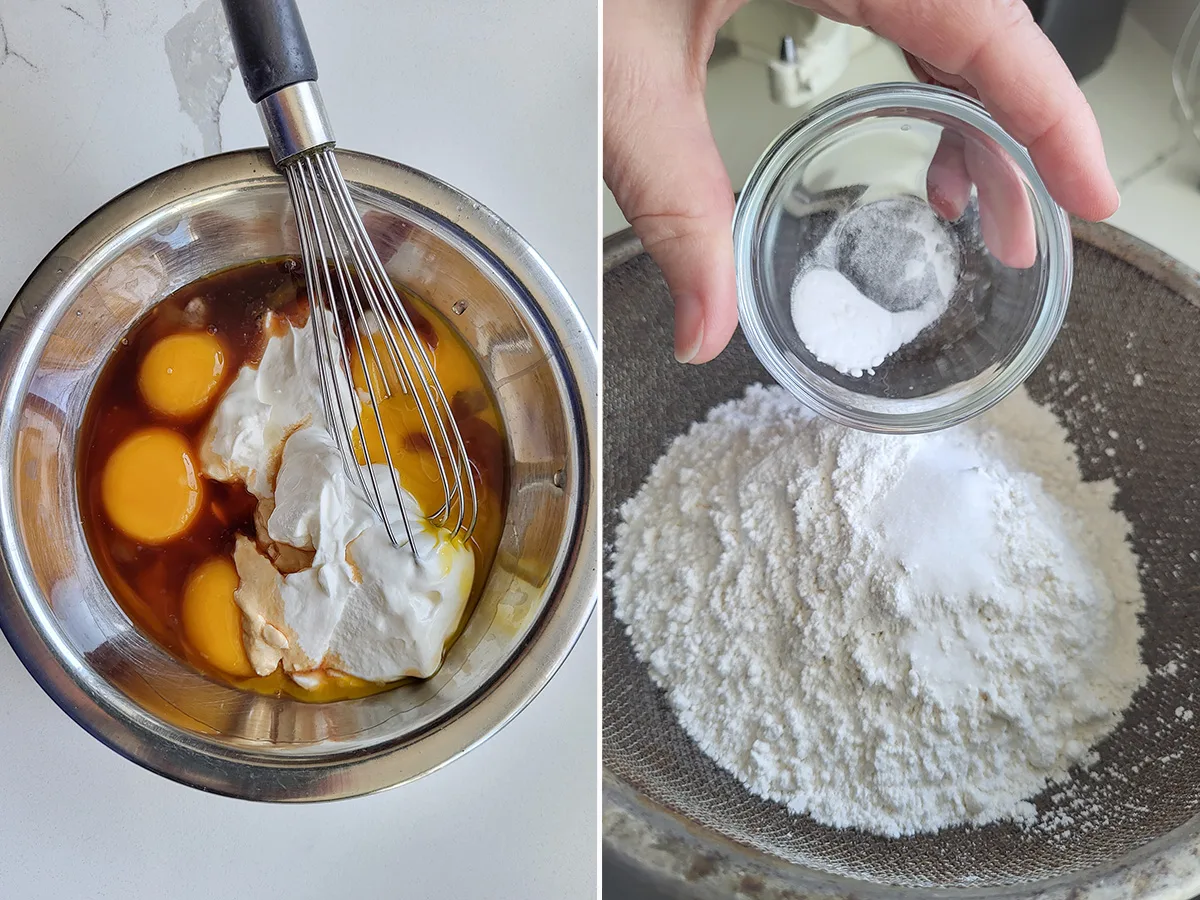
- In a small bowl whisk together the yolks, sour cream and vanilla.
- Sift the dry ingredients into a mixing bowl.
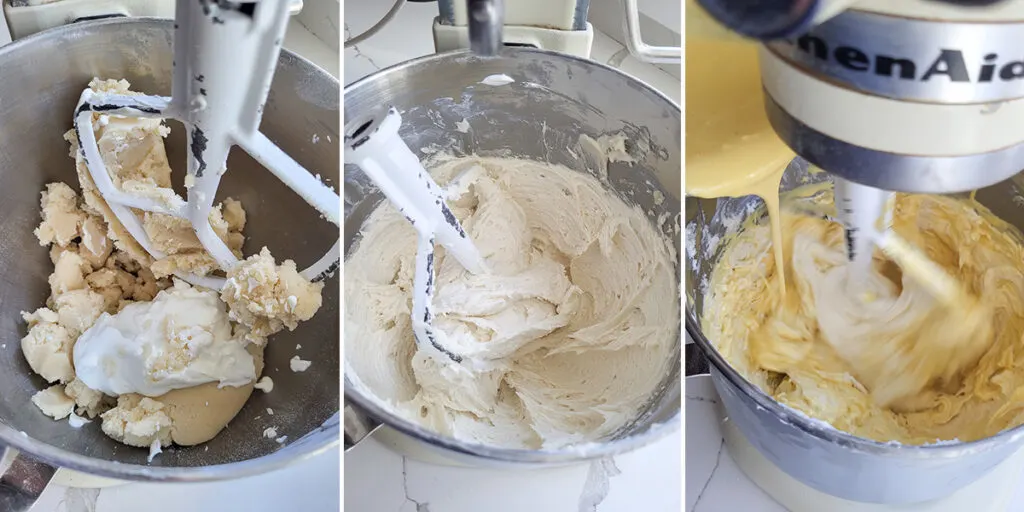
- Mix the dry ingredients on low speed and add the butter. Mix until it forms a thick paste. Add the reserved sour cream.
- Mix the batter on high speed until it is light and aerated. Scrape the bowl and beater.
- With the mixer running on low, add the yolk mixture. Mix until combined.
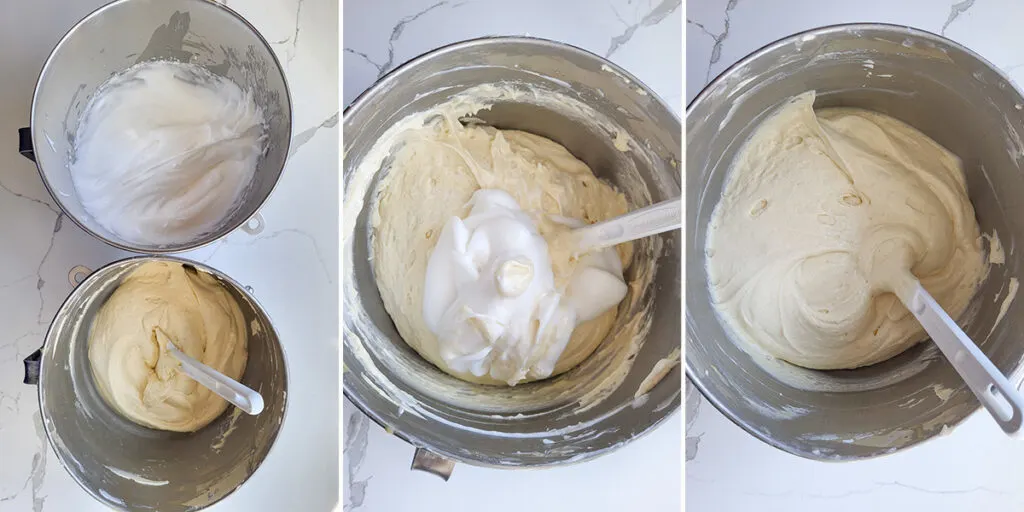
- Whip the whites with the cream of tarter and the remaining sugar. Do no overwhip the whites.
- Fold the whites into the batter in two batches.
- Fold just until there are no streaks of whites.
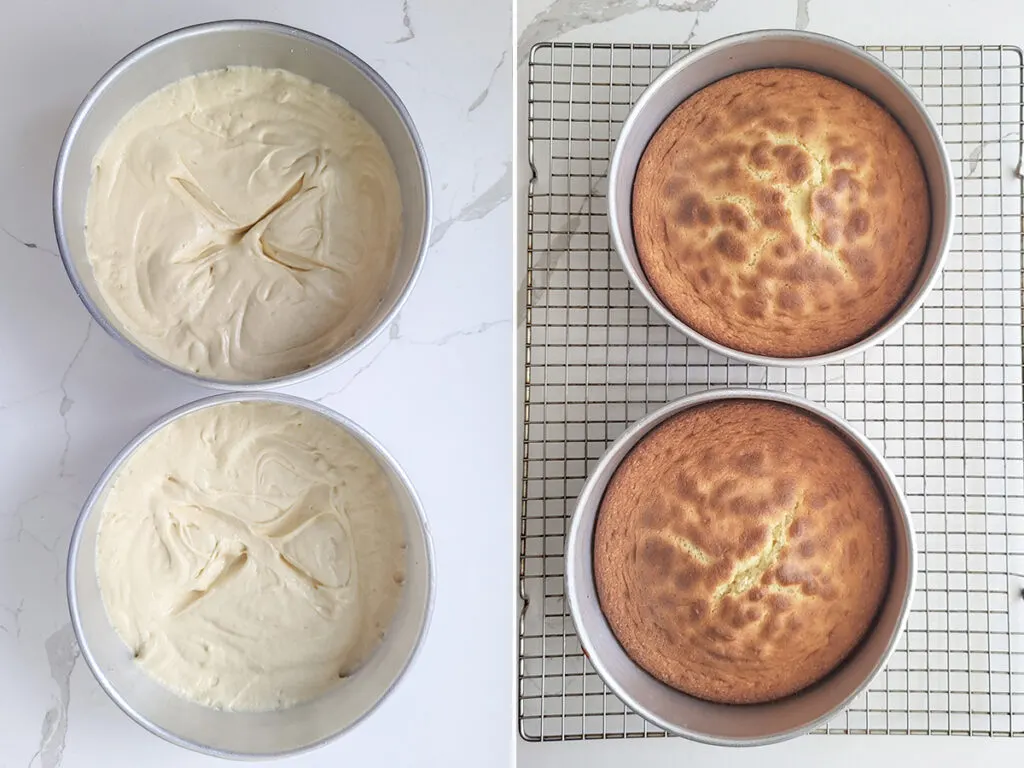
- Evenly divide the batter between the two pans. Smooth to even level then use the tip of your spatula to make an “X” in the center of each cake. This will help the cake rise more evenly in the oven.
- Bake until the center of the cake springs back when lightly pressed. Cool in the pan for 20 minutes then cool completely before icing.
What’s the difference between vanilla cake and yellow cake?
Most people use the terms “vanilla cake” and “yellow cake” interchangeably. Vanilla is the flavoring in the cake. The cake is yellow because of the eggs in the cake.
That being said, not all vanilla cakes are yellow cakes. If you eliminate the egg yolks in the cake and make white cake flavored with vanilla, it too is a vanilla cake.
Reverse Creaming vs. Traditional Creaming
Before posting this recipe I decided to do a quick kitchen experiment to back up my claims that reverse creaming is the way to go for this cake.
I used the same ingredients and mixed them with traditional creaming, reverse creaming and reverse creaming with the eggs separated and the whites whipped and folded in.
There were distinct differences between the three cakes.
- Cake 1 (traditional creaming method) had an open and regular crumb, but was not as tender as I would like and it had a slightly oily mouth-feel.
- Cake 2 (reverse creaming) was very tender, velvety and soft.
- Cake 3 (reverse method with whipped whites) had a slightly irregular but very tender crumb. It was not quite as velvety as cake 2, but it was lighter and quite tender. This was my favorite cake!

Three cakes with the exact same ingredients, but different mixing methods. Left=Traditional Method, Middle=Reverse Creaming, Right=Reverse with Whipped Whites
This is a really great all purpose yellow cake that is tender yet strong enough for stacking or carving. For more information about cake batter, visit the Baking School page.
Frosting your Cake
I like this recipe filled and iced with Italian Meringue Buttercream or Swiss Meringue Buttercream.
American Buttercream is slightly sweeter than meringue buttercream and is also nice with this cake.
Storage
The uniced cake can be stored for 2-3 days at room temperature for up to 2 months in the freezer. Do not refrigerate the cake unless it is filled or iced with a perishable frosting.
More Cake Recipes
Now that you’ve made this recipe what should you do with all the extra egg whites? Check out this collection of recipes that use extra whites for some great ideas.
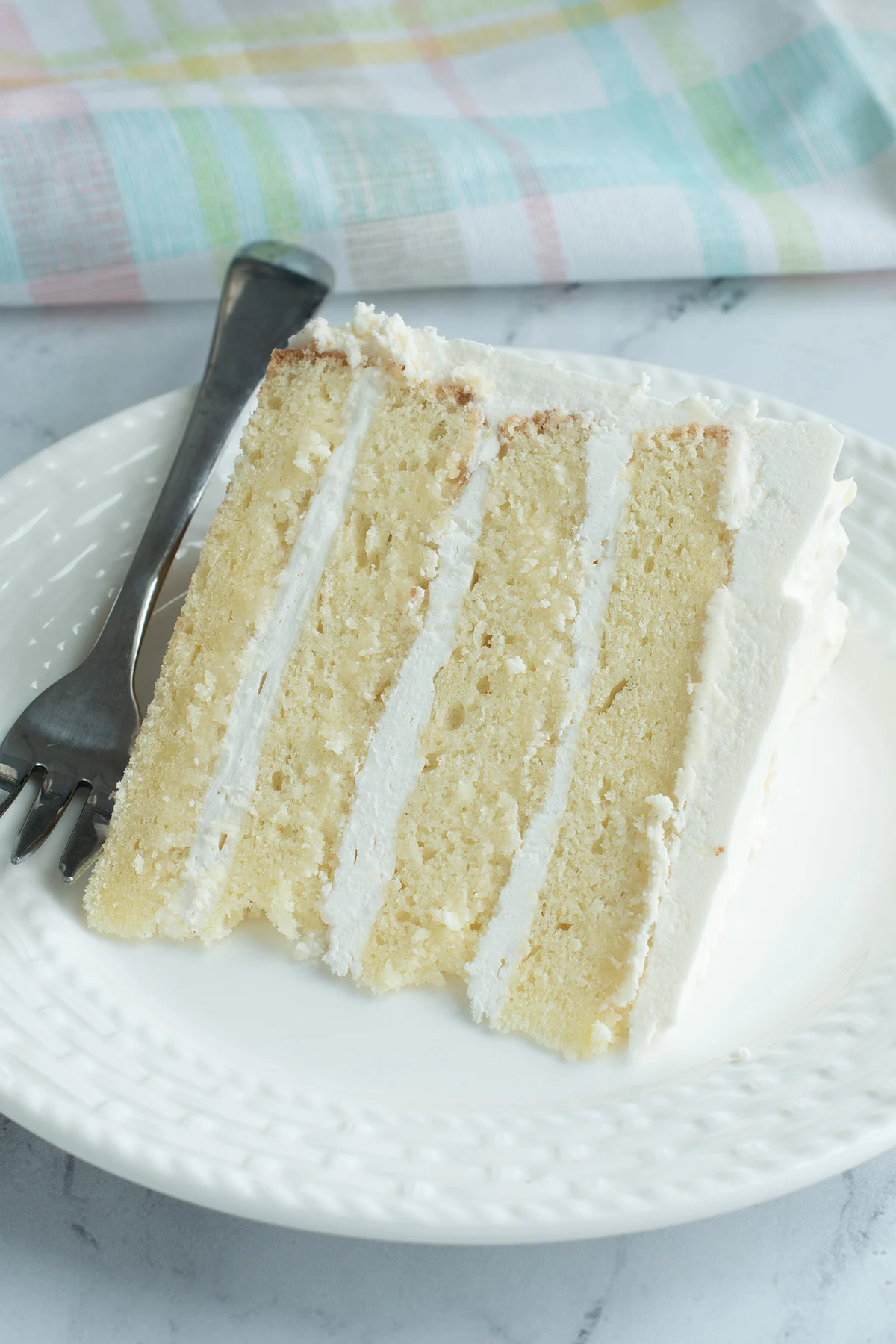
If you love this recipe as much as I do, please consider leaving a 5-star review.
Vanilla Butter Cake Recipe
Ingredients
- 6 large egg yolks (room temperature)
- 8 ounces sour cream (1 cup, room temperature, divided)
- 1 tablespoon vanilla extract
- 12 ounces granulated sugar (1 ½ cups, divided)
- 9 ounces cake flour (2 cups, see note)
- ¾ teaspoon baking powder
- ¾ teaspoon salt
- ¼ teaspoon baking soda
- 8 ounces unsalted butter (room temperature)
- 3 large egg whites (room temperature)
- ¼ teaspoon cream of tarter
Instructions
- Preheat the oven to 350 °F. Line two 8"x3" round cake pans with a circle of parchment paper or butter and flour the bottom of the pans only, not the sides.
- Combine 6 large egg yolks, 1/2 the sour cream and 1 tablespoon vanilla extract in a small bowl, whisk to combine, set aside.
- Into a mixer bowl put 1 ¼ cups of the sugar, sift in 9 ounces cake flour, ¾ teaspoon baking powder, ¼ teaspoon baking soda and ¾ teaspoon salt. Mix on low speed for 10 seconds to distribute the leavening. Add 8 ounces unsalted butter to the flour mixture. Mix on low until the butter is incorporated and the batter looks like a paste. Add the other ½ of the sour cream to the flour and butter mixture. Increase the speed to medium and mix about 3 minutes until the batter lightens in texture. If you're using a hand mixer add another minute or two to the total time.
- Scrape the sides and bottom of the bowl. With the mixer on low, add ½ the egg yolk mixture. Mix until mostly incorporated. Scrape the sides and bottom of the bowl. Add the rest of the egg yolk mixture. Scrape the bowl and mix until incorporated.
- In another bowl, whip 3 large egg whites with ¼ teaspoon cream of tarter on medium high until they form soft peaks. Turn the mixer to medium low and slowly add the remaining ¼ cup of sugar. Turn the mixer to medium high and whip the whites to full peak. Fold the whites into the base in 2 parts, folding just until there are no streaks of egg whites.
- Divide the batter between the 2 pans and spread so it’s level.
- Bake until the center of the cake springs back when lightly pressed or a toothpick inserted into the middle of the cake comes out clean, about 25-30 minutes.
- Cool 10 minutes in the pan and then turn out onto a cooling rack. When fully cooled, wrap in plastic and refrigerate at least 3 hours or overnight before filling and assembling the cake with your favorite frosting.
Would you like to save this recipe?
As an Amazon Associate and member of other affiliate programs, I earn from qualifying purchases.

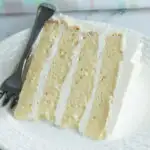
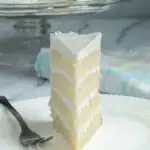
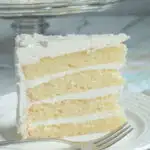
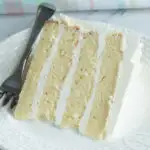





Hello,
I cannot have gluten or milk/cream. Based on what I have been reading I was planning on:
-not doing the reverse creaming method, sticking to the “traditional” method
-use 230 oz of GF flour and 50 oz of cornstarch (to mimic Cake Flour)
-eliminate the sour cream and the corresponding baking soda
Is this the right approach? Do you have a recommendation on how to better proceed?
Thank you!!
Replacing the GF flour for regular flour is a 1:1 swap. In my testing I used GF flour to replace cake flour and did not use corn starch. I don’t think you need to use the corn starch, just the GF flour. Yes, I do recommend the normal creaming method when using GF flour. Can you have butter? I’m assuming not since you can’t have cream. Do you plan to replace the butter with vegetable shortening? You can eliminate the sour cream but I would recommend adding another liquid in it’s place. Can you use nut milks or coconut milk? I would add a 1/2 cup of another liquid in place of the sour cream. If you eliminate the baking soda up the baking powder to 1 teaspoon.
Thank you for your response! I can have butter, just not milk, cream, or cheeses. I typically use an almond milk or a coconut cream if a recipe calls for it, but I have not figured out the best way to replace sour cream. Would you recommend keeping in the Baking soda and just replacing the sour cream with 1/2 cup of almond milk? I only thought of using the starch as a way to get the GF flour to mimic the cake flour properties vs an AP flour, but if you think its unnecessary I won’t do it. 🙂 I really would like to thank you! I have been searching everywhere for a way to learn about the chemistry behind baking and your blog has been exactly what I have been looking for! I am so thankful that you took the time not only to share your knowledge through the blog, but to answer my questions. Thank you genuinely!
Hi Vicki – If you can have butter that’s great. Butter will make the cake taste better. The reason to use corn starch with all purpose flour is to lower the protein content to make the cake more tender. Since GF flour doesn’t have gluten (the protein in flour) there really is no reason to use the corn starch. Just replace the all purpose flour with GF flour 1:1. If you use almond milk instead of sour cream you can use all baking powder instead of baking soda. The reason to use baking soda is to neutralize the acid in the sour cream. I would use about half as much almond milk as sour cream since there is more water in the almond milk.
I’m so glad the blog is helping you. It’s exactly why I started Baking Sense Blog.
This post is so informative. I can’t wait to try the reverse creaming method. I’m going to go check our your baking series too. Pinning!
Thanks, April.
I am such a mediocre baker that I can use all the help I can get! Great tips!
Thanks, Sarah. As I always say, even if you don’t care about the science, if you follow the recipe it will work.
Mmmmmm. Vanilla. A moist and tender cake. I don’t think I need anything more. Thank you for taking the time to compare methods to find the best technique!
You’re welcome, Lynne.
What a fantastic post, I have to say I love your cake series, every post is so informative and I always take away at least one thing I didn’t know! I will be using the whipped whites method from now on, look at how fluffy that cake is!
Thanks, Melissa!